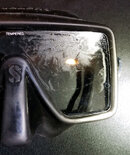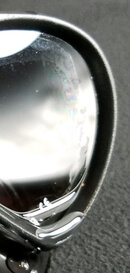- Messages
- 7,660
- Reaction score
- 4,717
- # of dives
- 200 - 499
Next steps
I plan to leave the new mask soaking in ammonia solution for two weeks to see if the ammonia is detrimental to glass/skirt/seal. The mask that I baked will be dishwasher cleaned then coated with baby shampoo and stored for two weeks to see if it is still 'good' after such treatment. I figure that the Ides of March would be a good time for the next test. I'll review this entire thread and answer all suggestions as to treatments. That input is most appreciated.
will be dishwasher cleaned then coated with baby shampoo and stored for two weeks to see if it is still 'good' after such treatment. I figure that the Ides of March would be a good time for the next test. I'll review this entire thread and answer all suggestions as to treatments. That input is most appreciated.
After that, I'll treat the loaner masks with the current method of choice and begin returning them.
And then there is the wrap-up. @Johnoly: Materials have been ordered.
Suggestions/criticisms always welcome, as usual...
I plan to leave the new mask soaking in ammonia solution for two weeks to see if the ammonia is detrimental to glass/skirt/seal. The mask that I baked
After that, I'll treat the loaner masks with the current method of choice and begin returning them.
And then there is the wrap-up. @Johnoly: Materials have been ordered.
Suggestions/criticisms always welcome, as usual...






